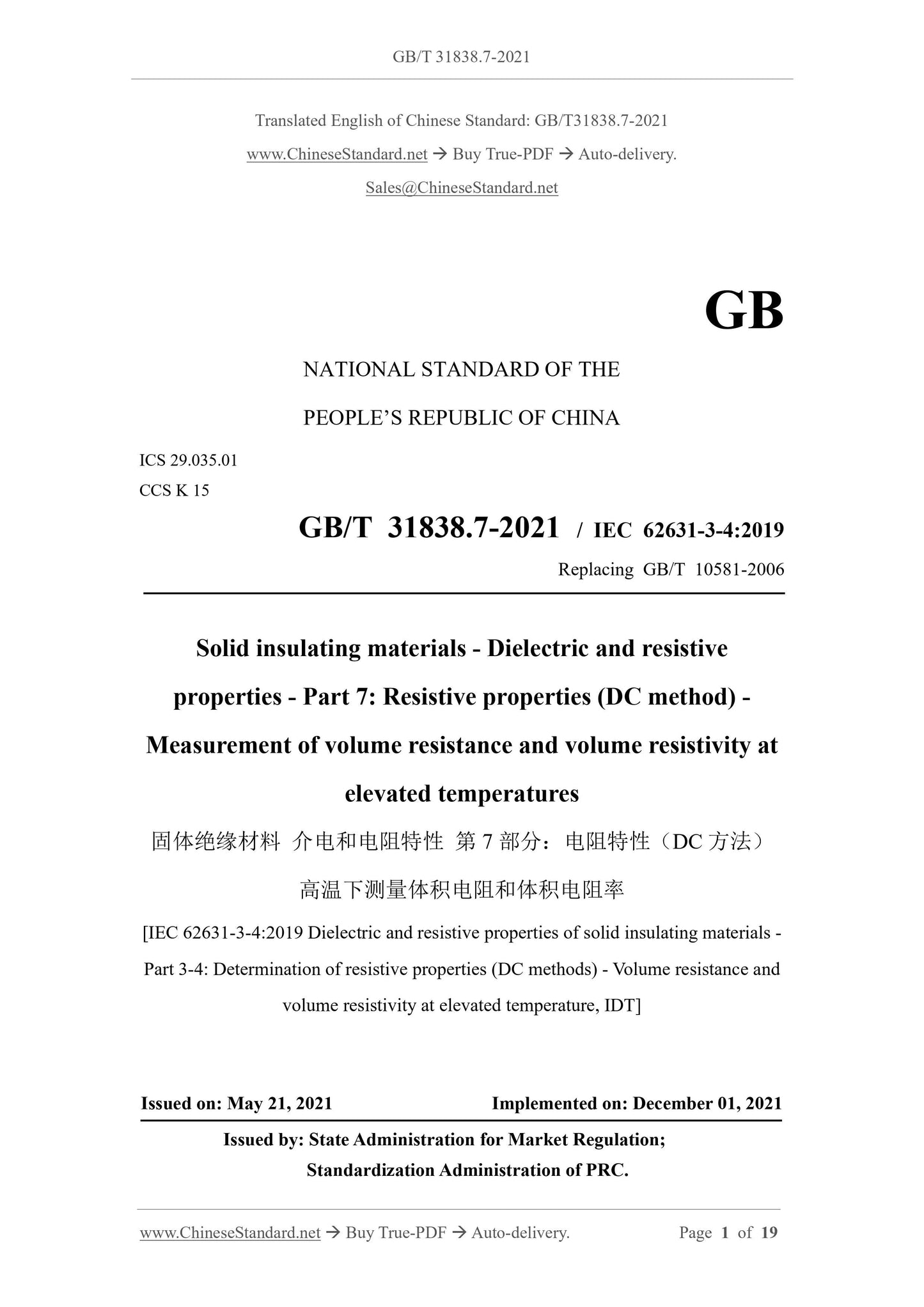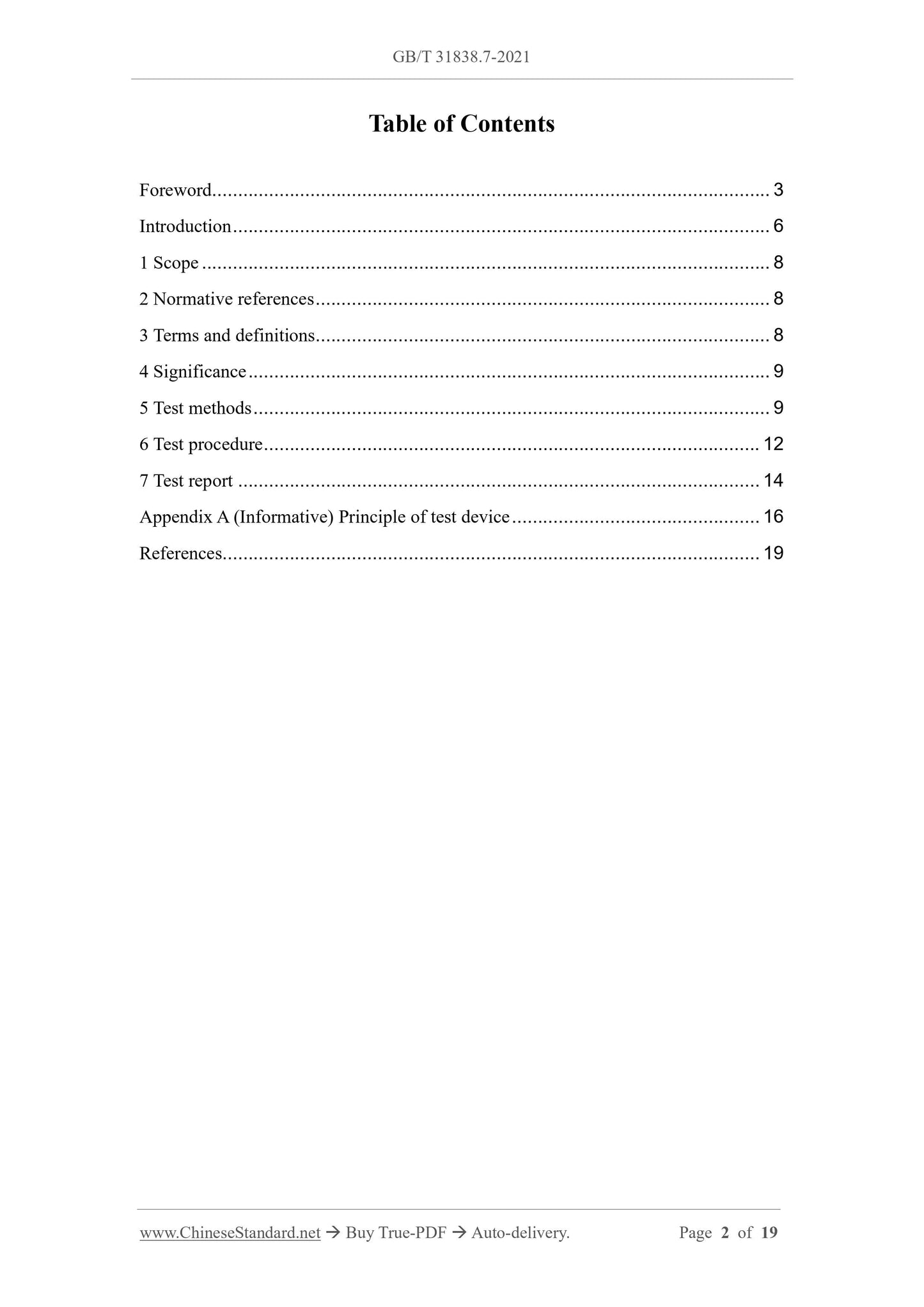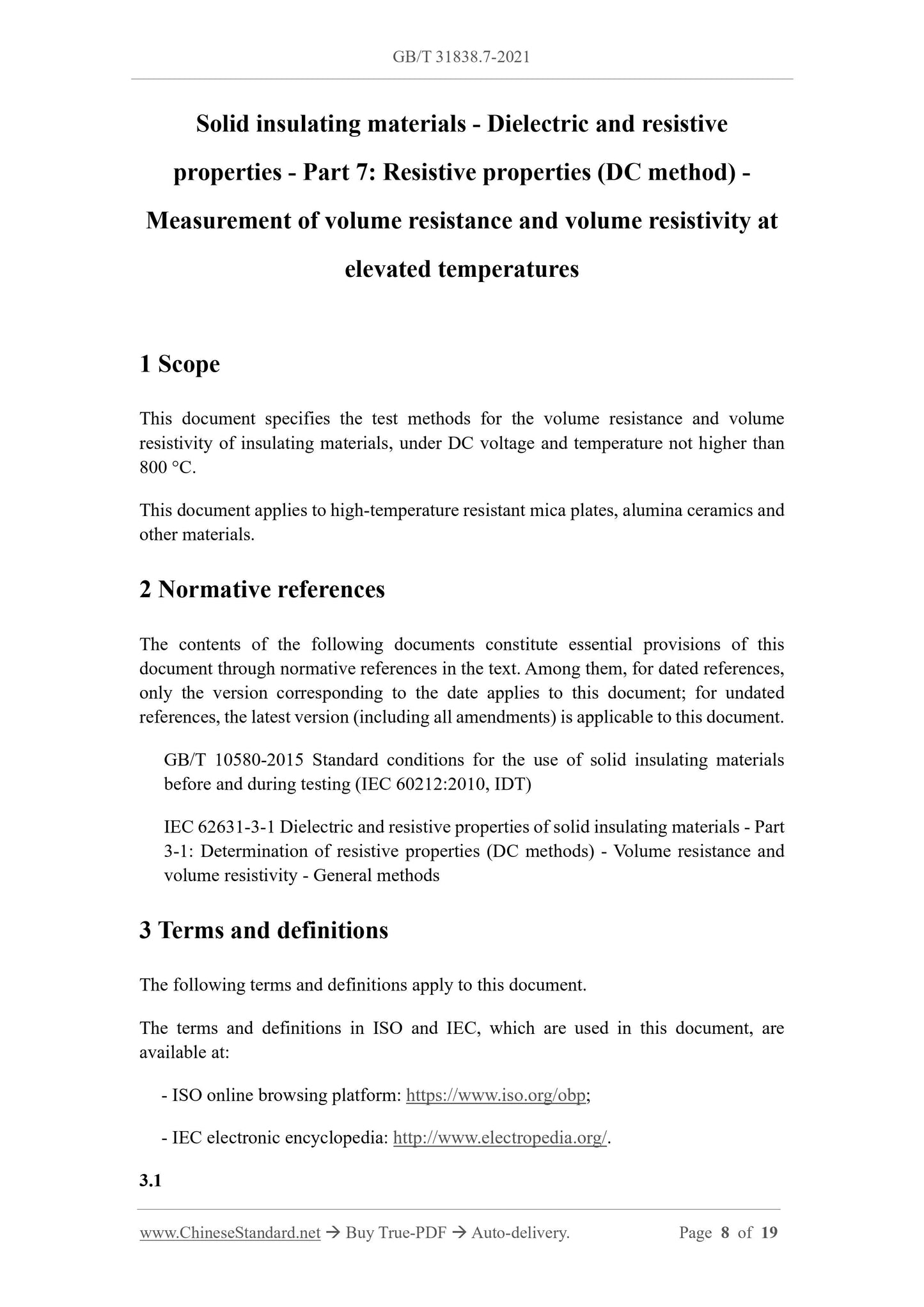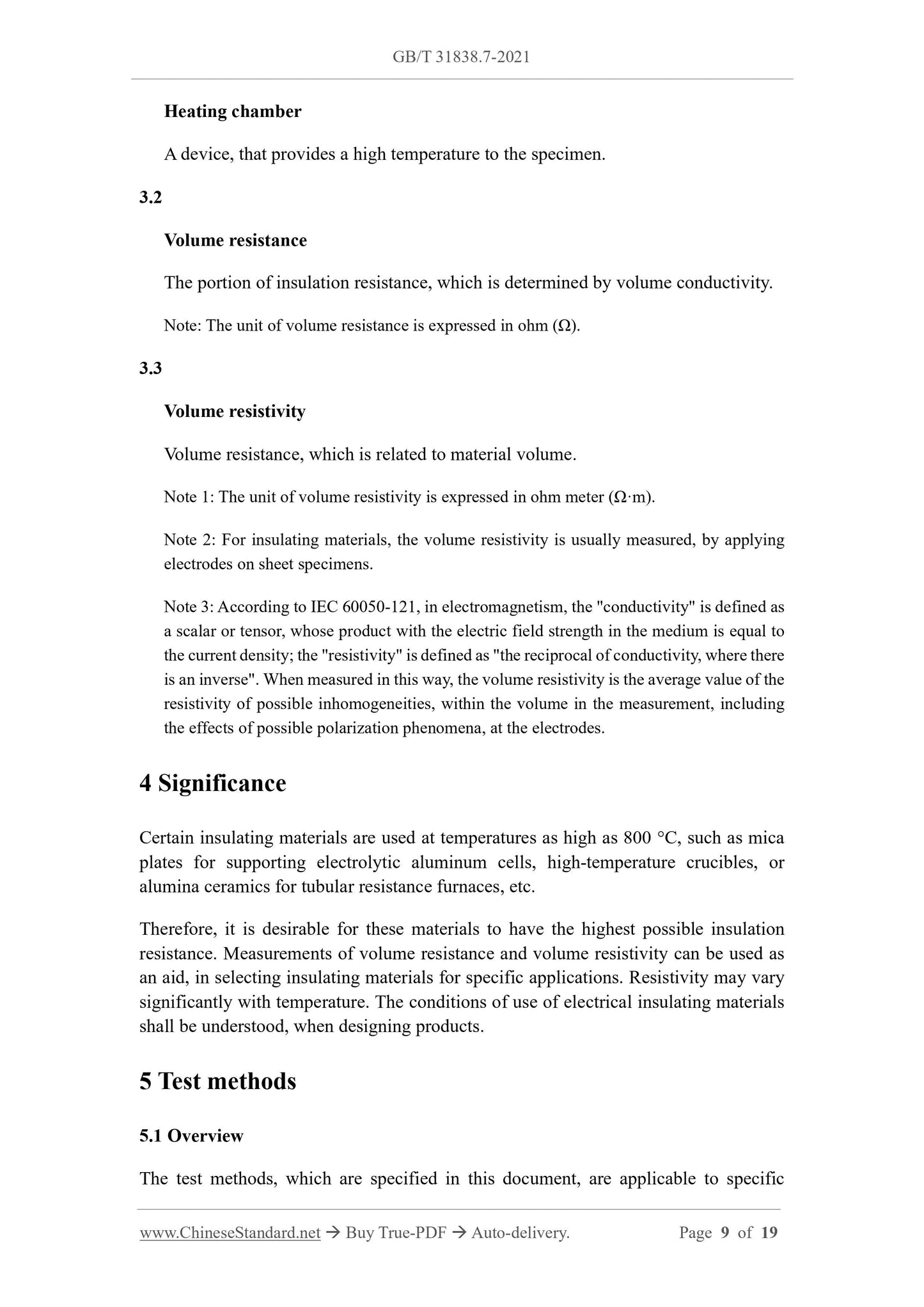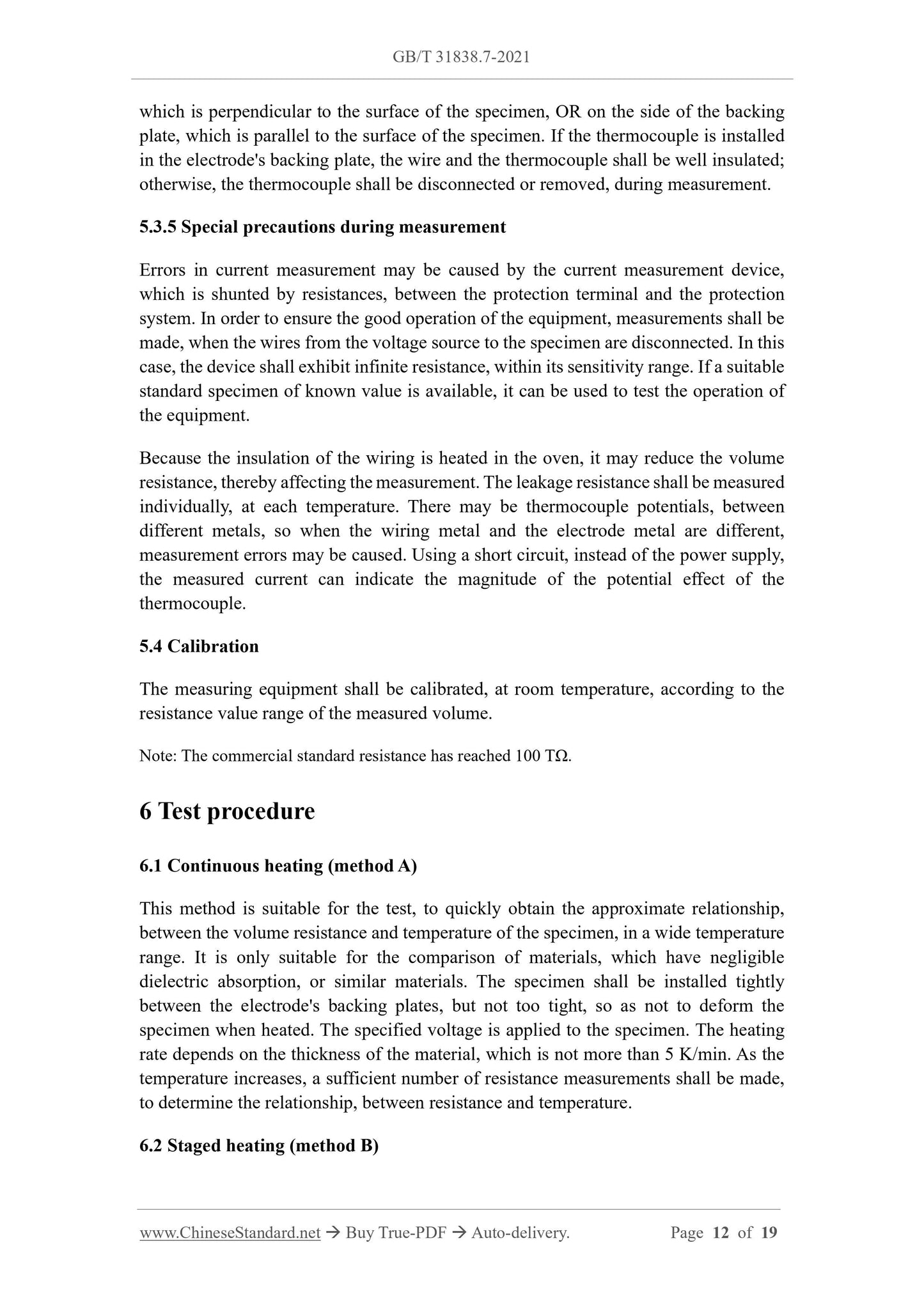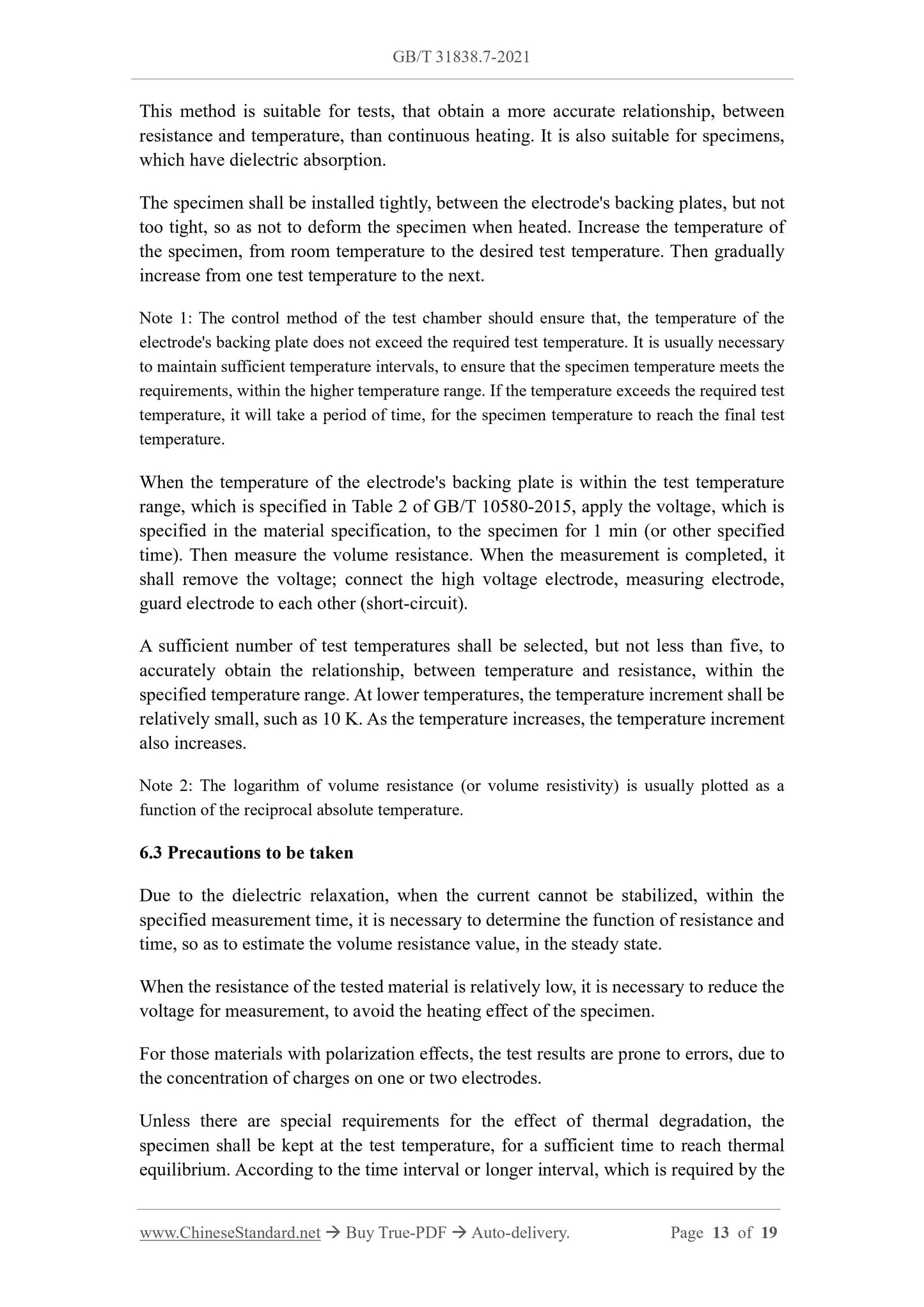1
/
of
6
www.ChineseStandard.us -- Field Test Asia Pte. Ltd.
GB/T 31838.7-2021 English PDF (GB/T31838.7-2021)
GB/T 31838.7-2021 English PDF (GB/T31838.7-2021)
Regular price
$255.00
Regular price
Sale price
$255.00
Unit price
/
per
Shipping calculated at checkout.
Couldn't load pickup availability
GB/T 31838.7-2021: Solid insulating materials - Dielectric and resistive properties - Part 7: Resistive properties(DC method) - Measurement of volume resistance and volume resistivity at elevated temperatures
Delivery: 9 seconds. Download (and Email) true-PDF + Invoice.Get Quotation: Click GB/T 31838.7-2021 (Self-service in 1-minute)
Newer / historical versions: GB/T 31838.7-2021
Preview True-PDF
Scope
This document specifies the test methods for the volume resistance and volumeresistivity of insulating materials, under DC voltage and temperature not higher than
800 °C.
This document applies to high-temperature resistant mica plates, alumina ceramics and
other materials.
Basic Data
| Standard ID | GB/T 31838.7-2021 (GB/T31838.7-2021) |
| Description (Translated English) | Solid insulating materials - Dielectric and resistive properties - Part 7: Resistive properties(DC method) - Measurement of volume resistance and volume resistivity at elevated temperatures |
| Sector / Industry | National Standard (Recommended) |
| Classification of Chinese Standard | K15 |
| Word Count Estimation | 14,180 |
| Issuing agency(ies) | State Administration for Market Regulation, China National Standardization Administration |
Share
